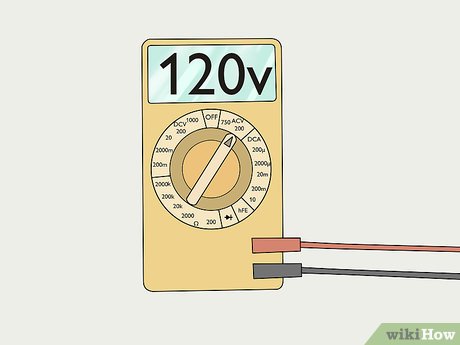Have you ever wondered why there are different settings on a multimeter when testing an outlet?
Well, don’t be surprised. In this article, I will discuss the purpose of the different settings on a multimeter and how they are used to test the voltage, current, and resistance of an outlet.
But before that, let’s talk briefly about what a multimeter is.
What is a Multimeter?
If you are an electrician or someone who works with electrical appliances on a regular basis, you probably know what a multimeter is.
But for a newbie, a multimeter is a tool that is used to measure electrical properties such as voltage, current, and resistance.
It is a versatile tool that can be used for a wide range of applications, including testing outlets.
Setting your multimeter correctly
When it comes to testing an outlet with a multimeter, it’s important to use the right setting to get an accurate reading, Chaktty advised.
The different settings on a multimeter allow you to measure different electrical properties of the outlet, such as the voltage or current.
With the right knowledge and tools, you can easily test your outlet and ensure that it’s working properly.
So, let’s dive into the world of multimeters and learn more about the settings used when testing an outlet!
What Setting on Multimeter is for Outlet?
To measure the voltage of an outlet using a multimeter, set the dial to AC voltage and choose the range that includes the voltage you expect to measure.
In the United States, the standard voltage for a household outlet is 120 volts AC, according to Techpally.
Make sure the multimeter’s probes are securely inserted into the outlet’s slots, with the black probe in the smaller slot and the red probe in the larger slot.
Once the probes are in place, read the voltage measurement on the multimeter’s display.
AC Voltage Setting
The AC voltage setting on a multimeter is used to measure the voltage of an alternating current (AC) circuit.
This setting is used to test outlets because the voltage in a typical household outlet is AC. To use the AC voltage setting on your multimeter, follow these steps:
1. Set your multimeter to the AC voltage setting. This setting is usually represented by a V with a wavy line next to it.
2. Insert the probes into the outlet. The red probe should be inserted into the smaller slot on the outlet, and the black probe should be inserted into the larger slot.
3. Read the voltage on the multimeter. The voltage in a typical household outlet should be around 120 volts.
Resistance Setting
The resistance setting on a multimeter is used to measure the resistance of a circuit.
This setting is not typically used to test outlets, but it can be helpful in troubleshooting electrical problems.
To use the resistance setting on your multimeter, follow these steps:
1. Set your multimeter to the resistance setting. This setting is usually represented by an omega symbol (Ω).
2. Insert the probes into the outlet. The red probe should be inserted into the smaller slot on the outlet, and the black probe should be inserted into the larger slot.
3. Read the resistance on the multimeter. The resistance in a typical household outlet should be very low, around 0.1 to 0.2 ohms.
Continuity Setting
The continuity setting on a multimeter is used to test whether a circuit is complete or not.
This setting can be used to test outlets to make sure they are working properly.
To use the continuity setting on your multimeter, follow these steps:
1. Set your multimeter to the continuity setting. This setting is usually represented by a symbol that looks like a sound wave.
2. Insert the probes into the outlet. The red probe should be inserted into the smaller slot on the outlet, and the black probe should be inserted into the larger slot.
3. Listen for a beep or look for a reading on the multimeter. If you hear a beep or see a reading, the circuit is complete and the outlet is working properly.
Conclusion
In conclusion, a multimeter is a valuable tool for anyone who works with electrical appliances or circuits.
By using the different settings on your multimeter, you can test outlets, troubleshoot electrical problems, and ensure that your electrical system is working properly.
Whether you are a professional electrician or a homeowner, a multimeter is an essential tool that should be in your toolbox.
